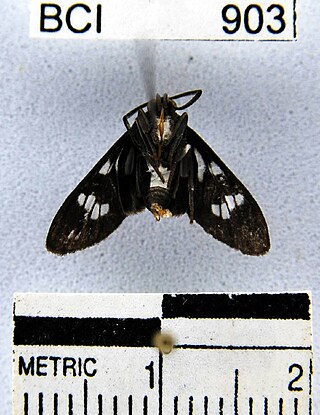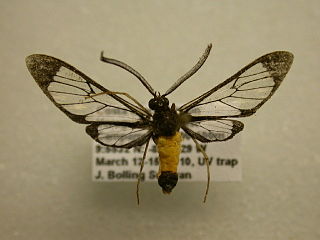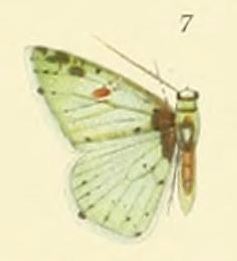Dipaenae is a genus of moths in the subfamily Arctiinae. The genus was erected by Francis Walker in 1854.

Eucereon is a genus of tiger moths in the family Erebidae. The genus was erected by Jacob Hübner in 1819.

Gymnelia is a genus of moths in the subfamily Arctiinae. The genus was erected by Francis Walker in 1854.

Heliura is a genus of moths in the subfamily Arctiinae. The genus was erected by Arthur Gardiner Butler in 1876.

Idalus is a genus of moths in the family Erebidae. The genus was erected by Francis Walker in 1855.

Loxophlebia is a genus of moths in the subfamily Arctiinae. The genus was erected by Arthur Gardiner Butler in 1876.

Macrocneme is a genus of tiger moths in the family Erebidae. The genus was erected by Jacob Hübner in 1818.

Mesothen is a genus of moths in the subfamily Arctiinae. The genus was erected by George Hampson in 1898.

Opharus is a genus of moths in the family Erebidae. The genus was erected by Francis Walker in 1855.
Pheia is a genus of moths in the subfamily Arctiinae erected by Francis Walker in 1854.

Saurita is a genus of moths in the subfamily Arctiinae. The genus was erected by Gottlieb August Wilhelm Herrich-Schäffer in 1855.

Antiblemma is a genus of moths of the family Noctuidae.

Elaphria is a genus of moths of the family Noctuidae. The genus was erected by Jacob Hübner in 1818.

Cyclophora is a genus of moths in the family Geometridae. Many species are referred to as mochas in reference to their colouration, primarily in Europe.

Lissochlora is a genus of moths in the family Geometridae described by Warren in 1900.

Erbessa is a genus of moths of the family Notodontidae. It consists of the following species:

Desmia is a genus of moths of the family Crambidae. The genus was erected by John O. Westwood in 1832.

Apatelodes is a genus of moths of the family Apatelodidae first described by Packard in 1864.
Givira is a genus of moths in the family Cossidae.

Acraga is a genus of moths of the family Dalceridae. The genus has neotropical distribution.














